FEATURES|COLUMNS|Silk Alchemy
Conscious Coloring: A Simple Practice in Reflection, Part Four
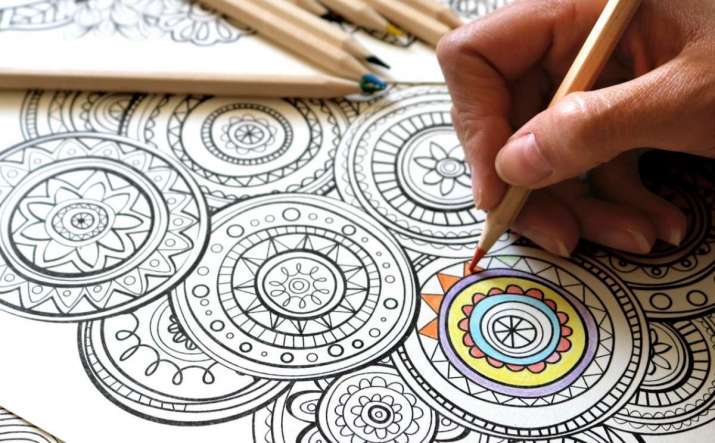
Over the last few years, research on the brain, consciousness, meditation, and creativity has been shared increasingly widely. Our understanding has deepened regarding the brain’s physiology, its improved connectivity after art production, and the de-stressing and pleasure hormones released while looking upon and creating art, not to mention art’s role in healing emotions.
For a few years now, many retailers have been offering a growing array of coloring books aimed at adults—mandalas, zentangles, even hardback volumes akin to the old color-by-numbers landscapes—all with the mindfulness umbrella arching overhead. A fad or something of tenable benefit?
It has been proposed that coloring takes us back to the safe feelings of childhood and for some (maybe for many) this may very much be the case. However as a generalization, I feel that we need to remain mindful of this assumption. Some children did not have safe childhoods. For some, the suggestion that coloring in may activate feelings of childhood security is both presumptive and potentially damaging.
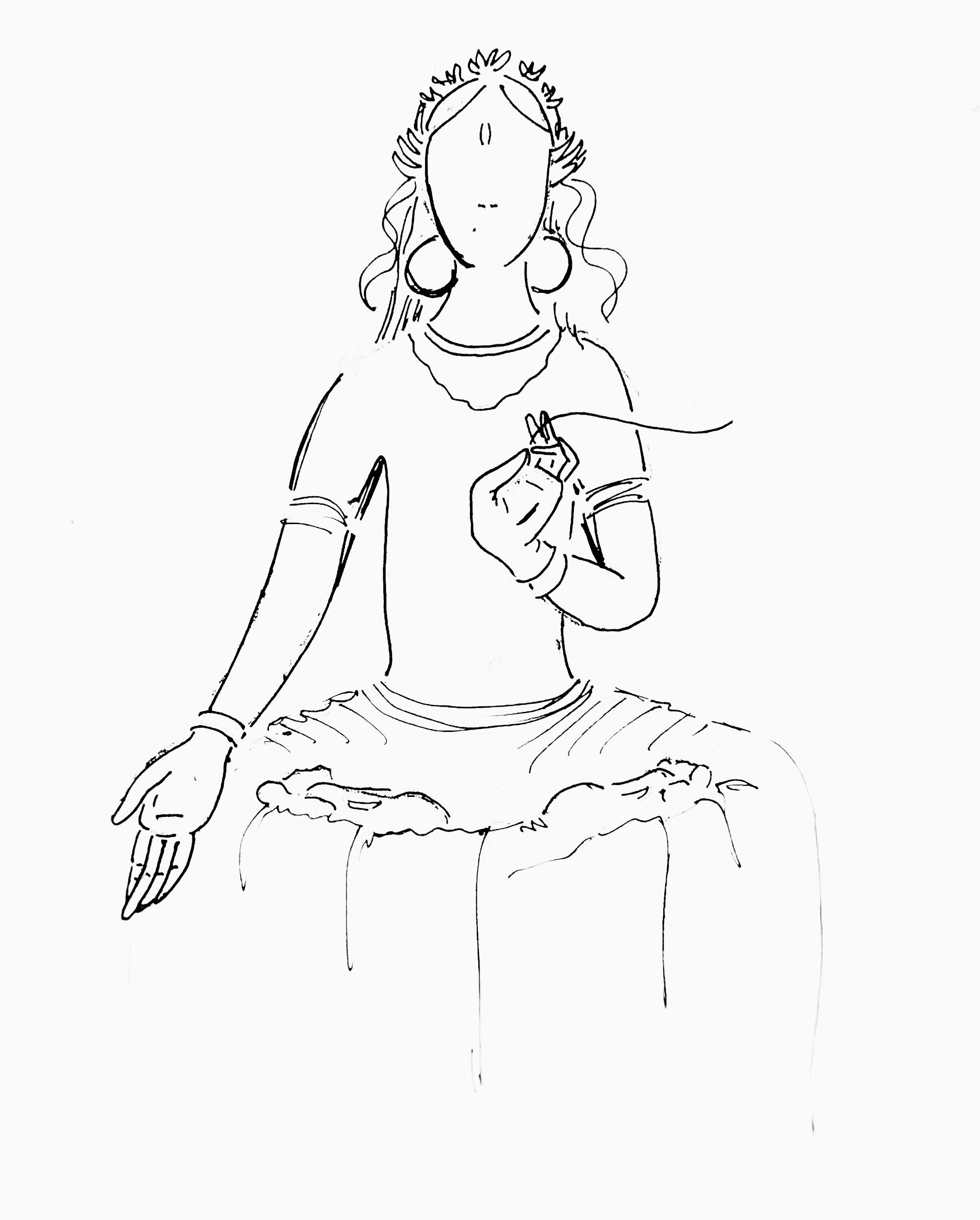
White Tara. Image courtesy of the author
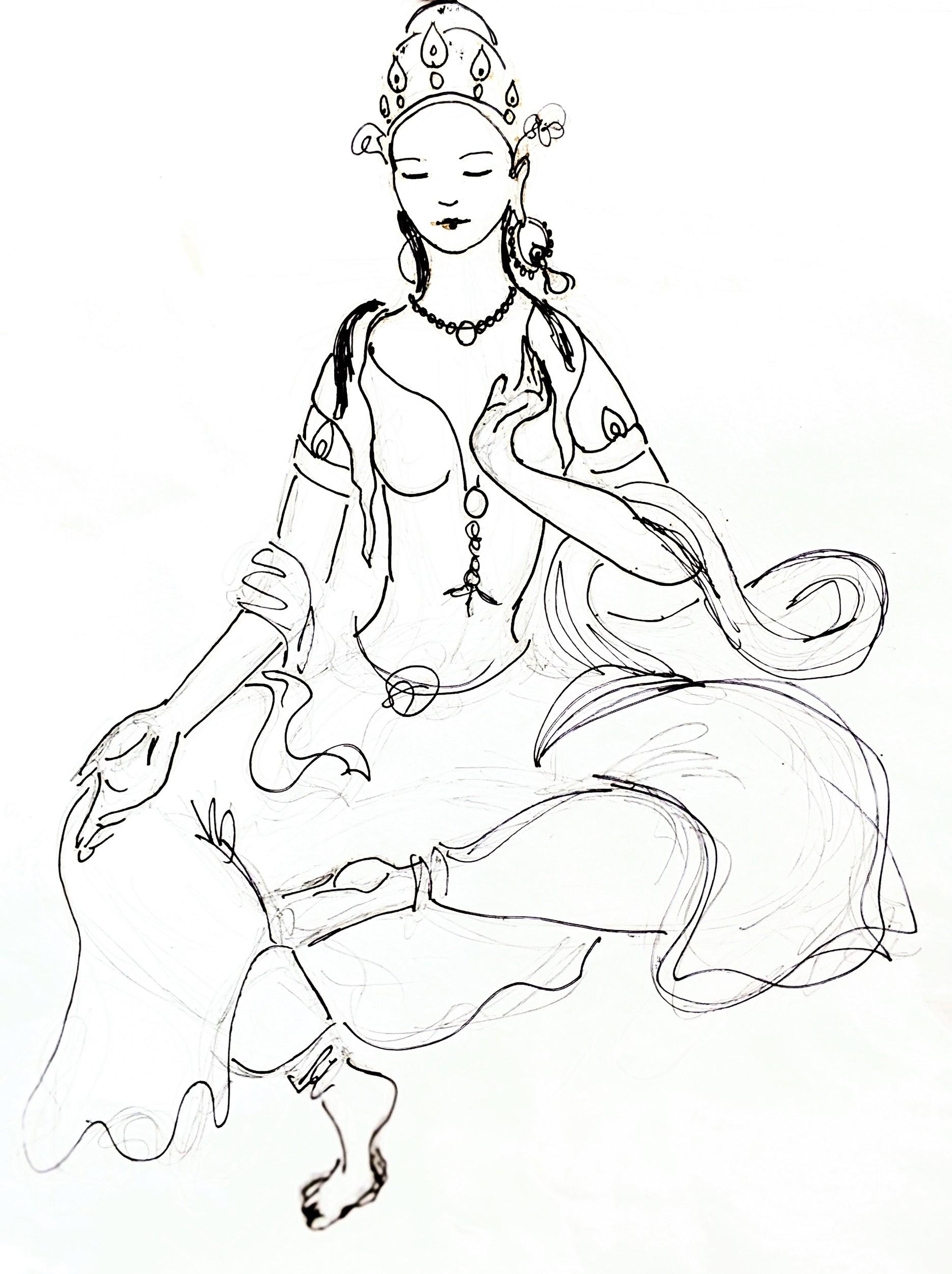
Tara. Image courtesy of the author
So to explain why coloring has therapeutic benefits, I would like to consider the reasons why and how the brain and body respond to it.
Long have the highly beneficial virtues of creating art been advocated, yet we also know how terrifying it can be to have a blank sheet of paper staring accusingly back at us, waiting for us to materialize a masterpiece upon its expectant, desolate plane as we, the creator, stare back with vacant dread.
For some, it’s a casus belli—a provocation to battle. For others, the bright white void may as well be the glaring headlights of a brakeless 44-tonne truck hurtling down the freeway with our name on it. The amygdala wants to protect its host, so kicks into overdrive. The sympathetic nervous system engages all resources to flee or freeze or, of course, fight the concept all together. To make matters worse, that really tasty sponge cake you indulged in earlier has turned into a leaden weight in your stomach and the comforting hot drink now congeals with bile as your digestive system goes on strike. Your heart doesn’t know to which beat it now dances. Is it the cha-cha? Carmen Miranda in a fruity hat? Screaming hardcore punk rock from men who clearly need a hug? Or has it gone full underground techno gabba? The brain doesn’t even know as it can only hear the deafening, noise-canceling high whistle of blood mobilizing and being deployed to your survival-essential extremities, like the legs. Or through them, as it may as well be draining out into roots that currently arrest you to the spot. Short term, this strategy works well. RUN when you see a zombie, FREEZE if you happen to be a wood frog, and FIGHT when you see injustice. (FAUN is for another topic). Long term, however, it is a disaster on the system. No one wants to live with lead sponge cake in their tummy. And thanks to the amygdala’s survivalist proclivity for negative over positive, as neuropsychologist Rick Hanson tells us: “The human brain is like Velcro for negative experiences and Teflon for positive ones.” We need to hold positive experiences and thoughts in our awareness for at least 12 seconds for them to take up residence in our system.
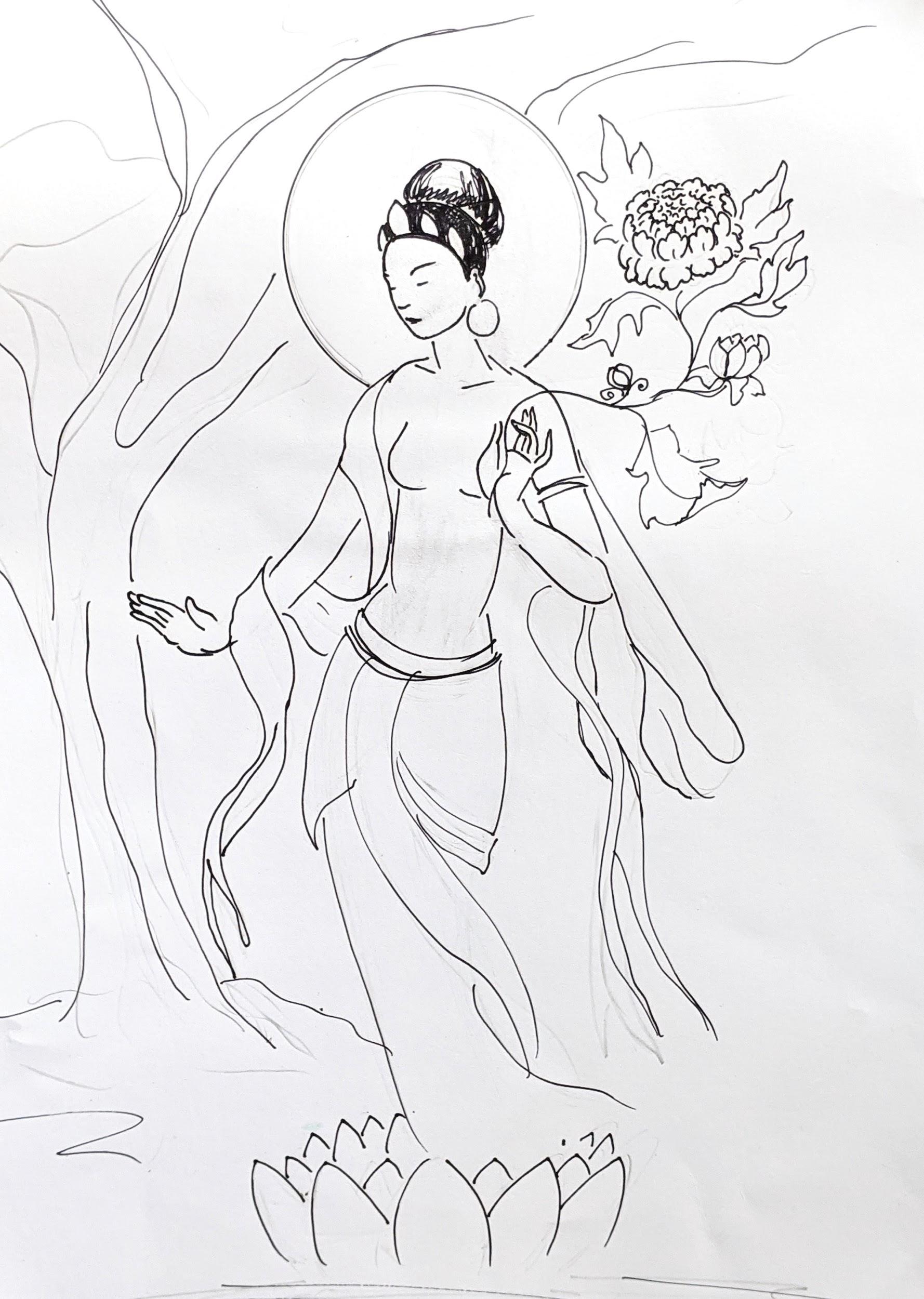
Standing White Tara. Image courtesy of the author
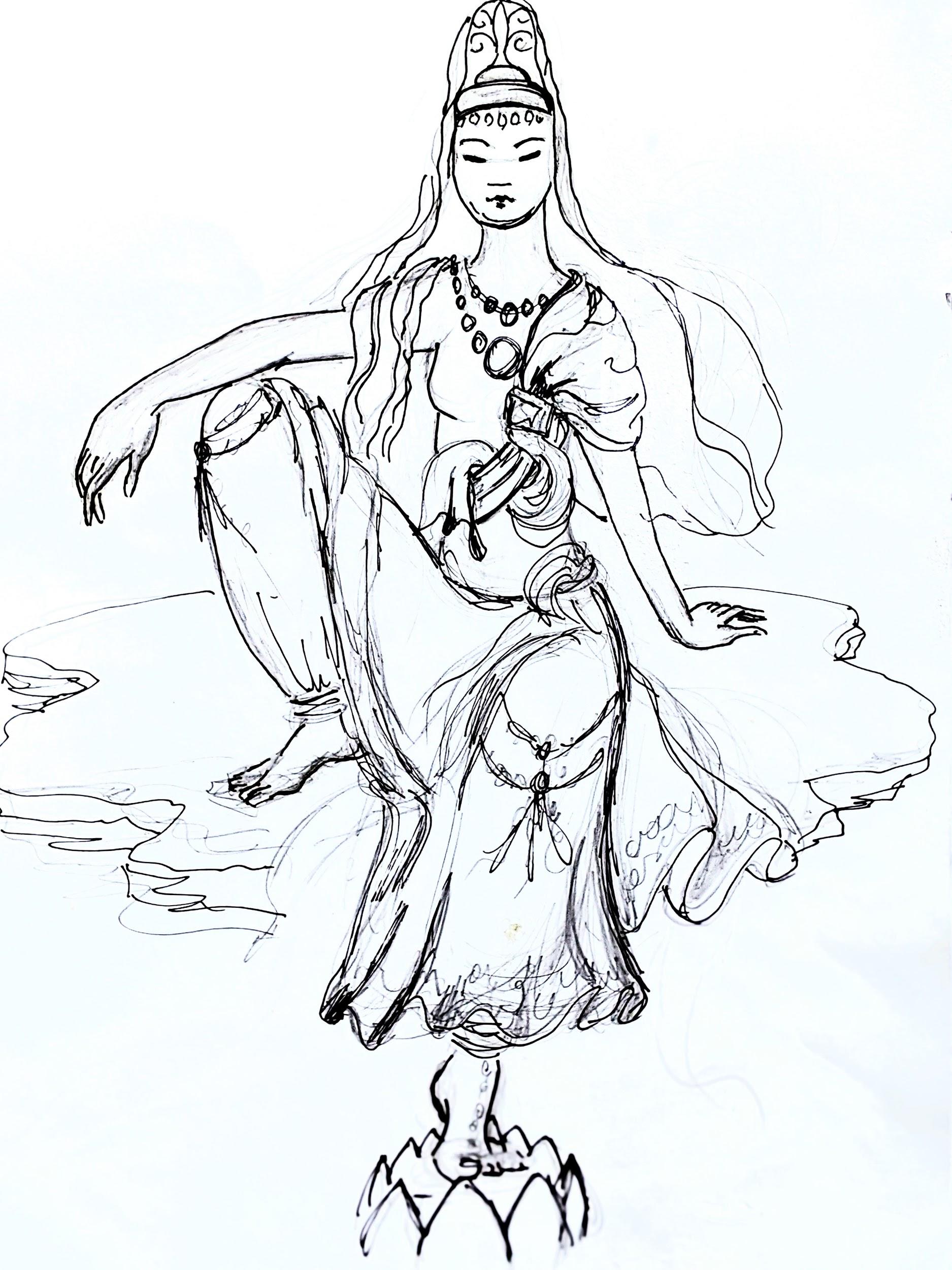
Kuan Yin. Image courtesy of the author
And this is one significant reason why we advocate art as therapy. We spend an extended period of time in the timeless space of calm focused attention. But how can we placate the aforementioned terror of a blank canvas?
Boundaries to the rescue!
Having the outlines already on the paper really helps to negate that fear or anxiety as well as the expectation to be the next da Vinci. We don’t need to “think” now, we can simply relax into that restful state in which the brain naturally resides when the amygdala feels its “human host” is safe. When our overactive mind is in a meditative state.
In his extraordinary and, I believe, seminal book The Age of Insight (2012), author, professor, and Nobel Prize recipient for his work on neurophysiology Eric R. Kandel writes that “the brain is a creativity machine. It searches for patterns amid chaos and ambiguity.” (498) And the brain is wired and primed to excite when faced with these puzzles and mysteries to solve, bringing order to the image glimpsed through the organizing of color within the apparent linear chaos. As the “random” lines fill with form-forming color, the brain sees their “meaning” and in its fleeting rapture excites certain neurons that send the information to the limbic then sympathetic nervous systems, eliciting an emotional response which our limbic system remembers. You see, these specific groups of neurons within the amygdala respond more strongly when visual stimuli are matched with pleasure than compared with punishment, indicating that a positive relationship with images really does affect our emotional physiology.
The gentle yet pervasive act of coloring holds restful, mindful, and excited neurons all at the same time. What we are instinctively drawn to can be an interesting thing to note. Likewise, what we spend time focusing on deepens a relationship with that subject.
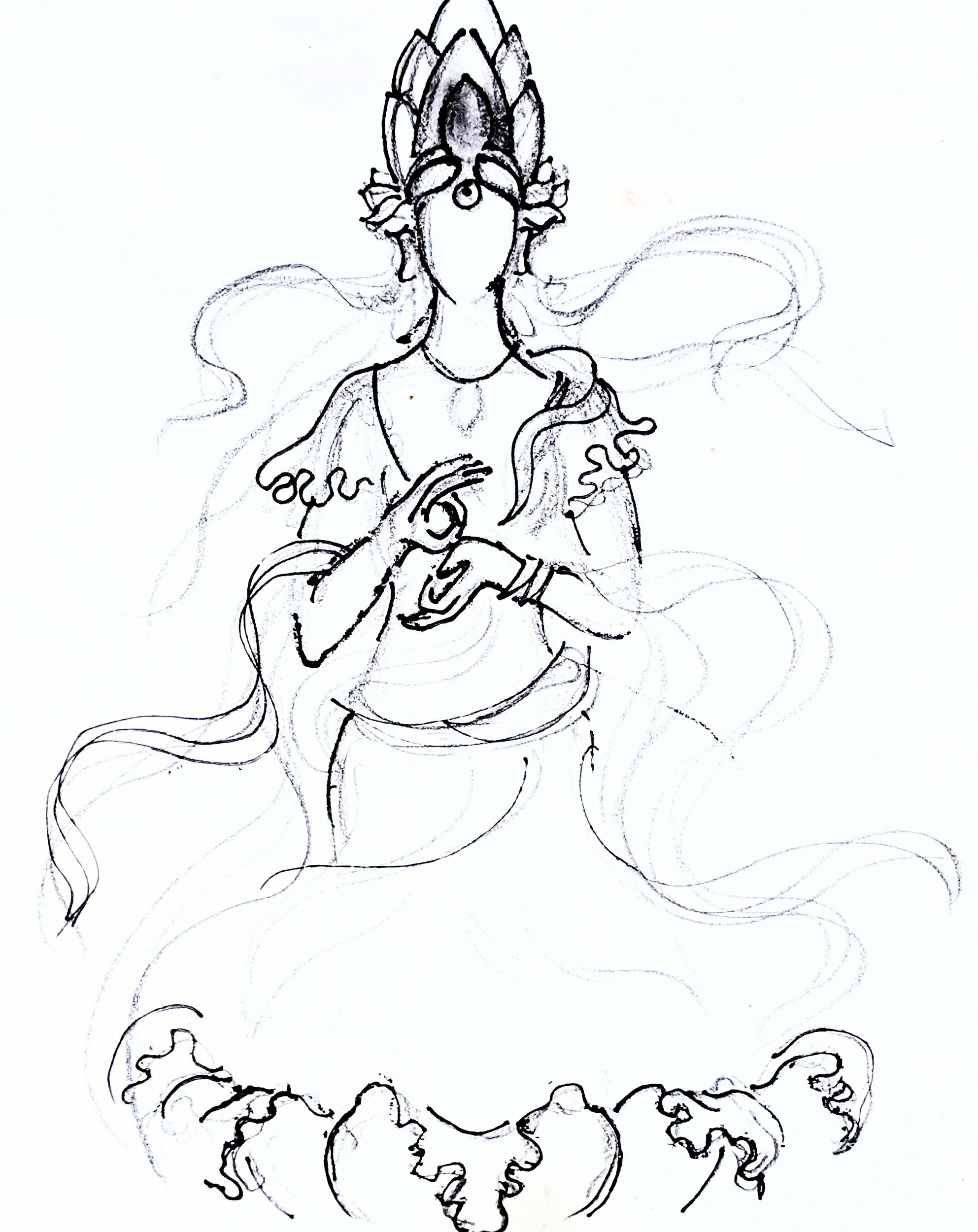
Prajnaparamita. Image courtesy of the author
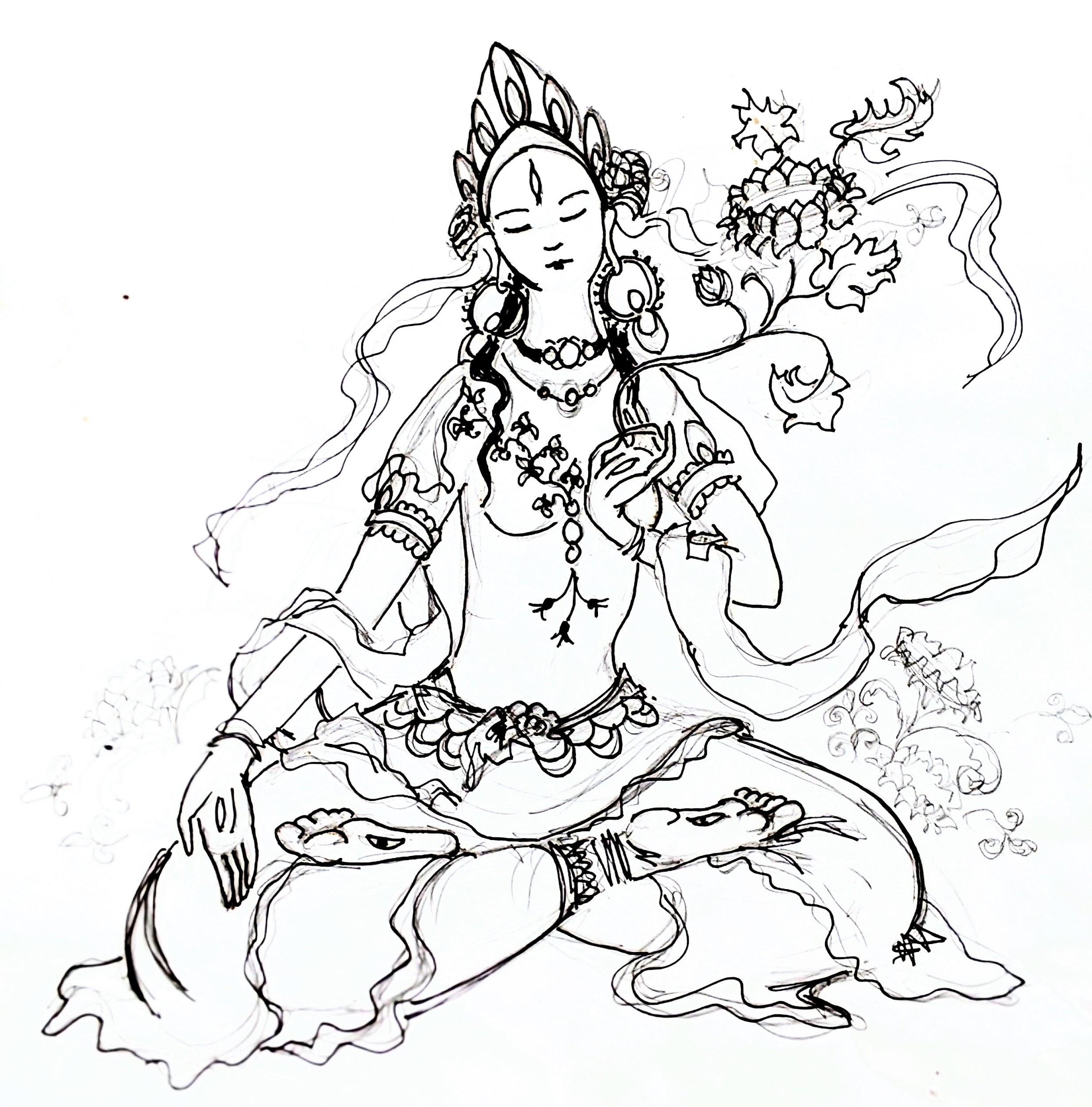
White Tara. Image courtesy of the author
If you are curious as to why the mandala is such a go-to for many of us, please do feel free to read my thoughts here.
However, here I offer you a selection of images which, if it feels right for you, you can print and color. After last month’s ekphrastic meditations upon White Tara, some may wish to deepen that connection with meditations of coloring.
Print off seven of the same Tara image to which you feel most drawn, and each day for a week set aside some quiet time to color her. Have your collection of colors to hand and let each session flow with instinctual “choices.” Make a note of the date and, if you so wish, journal any notes on the reverse. For example, how have you been feeling today? How do you feel during and after the coloring? If you wish to continue for longer than seven days, feel free to do so. You may like to follow the same practice with another deity of your choice.
I shall also include a small selection of other deities, which I will discuss in more detail, in next month’s therapeutic offering..
See more
Tilly Campbell-Allen (Dakini as Art)
Related features from Buddhistdoor Global
Grow Your Garden: A Simple Practice in Reflection, Part One
Know Thyself: A Simple Practice in Reflection, Part Two
Ekphrastic Poetry: A Simple Practice in Reflection, Part Three














